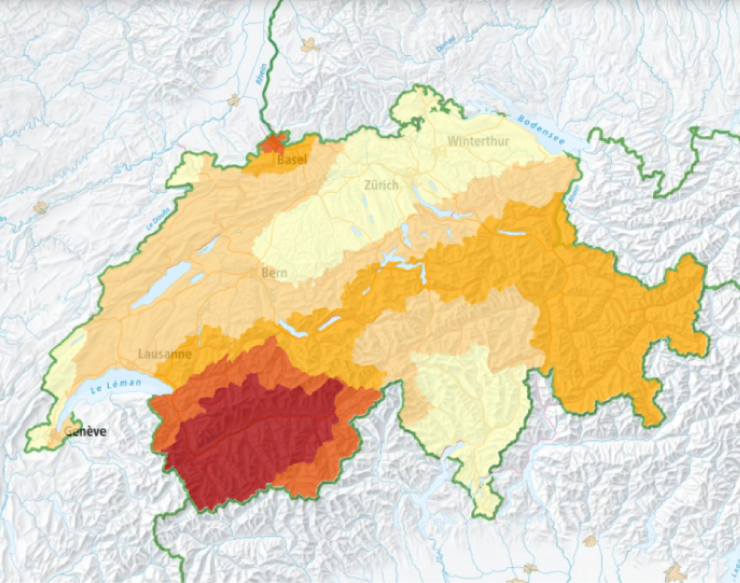2020-09-24
Updated earthquake-resistant construction standards
Structures designed to be earthquake-resistant provide the best protection from the effects of an earthquake. The specifications for such structures in Switzerland are laid down in SIA 261: Actions on Structures, a standard produced by the Swiss Society of Engineers and Architects (SIA). A revised version recently came into force, taking into account new data from the seismic hazard model updated in 2015 by the Swiss Seismological Service (SED) at ETH Zurich. The main adjustments relate to the map of earthquake zones and the response spectra for various subsoil categories. In order to better protect buildings with vital infrastructure functions (building class III, e.g. acute care hospitals), the safety factors required to prove the structural safety and serviceability of these buildings have also been increased slightly.
Based on a more fine-grained seismic hazard map, the earthquake zone map now divides Switzerland into five areas, each with differing requirements when it comes to earthquake-resistant construction. This is one more zone than before. The zone boundaries have also been adjusted based on the new findings from the updated seismic hazard model.
Read more...Engineers use response spectra to work out the design requirements for structures on various substrates (which are divided into subsoil categories for the purpose of the standards). Based on these response spectra, they identify the measures that need to be implemented to ensure that a structure built on the subsoil at a given location complies with the standards. The adjustments made to the response spectra in the revised standard are based on an in-depth analysis of earthquake recordings at many seismic stations together with geophysical measurements determining the local properties of the subsoil at the station locations. The standard takes account of the fact that loosely deposited sediments amplify the seismic waves. As a result, structures at such locations must be designed to withstand stronger ground movements.
In Switzerland, cantons are responsible for checking compliance with construction standards. In some cantons, building legislation explicitly requires compliance with the applicable SIA standards or lays down earthquake-specific requirements as part of the planning permission process. In others, implementation is not explicitly regulated by law and is not monitored either. According to the Swiss Federal Office for the Environment, the additional costs involved in making a structure earthquake-resistant represent no more than 1% of the total, provided that this is factored into the design at an early stage.
Learn more
Earthquake-Resistant Construction
SIA 261 (in German, French and Italian)
